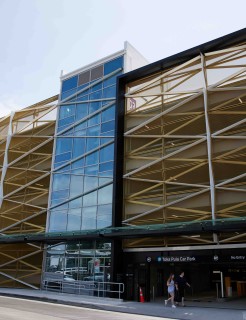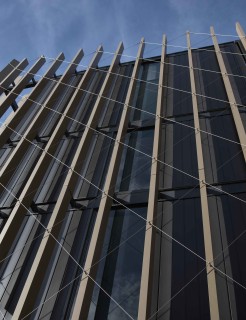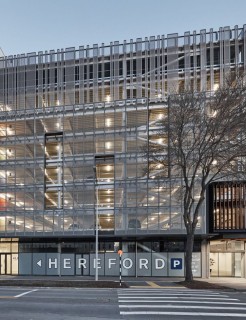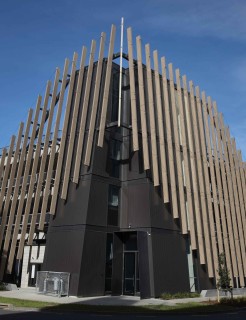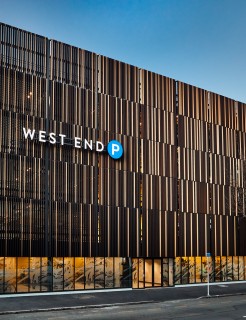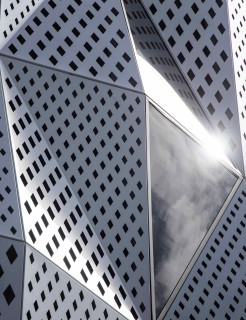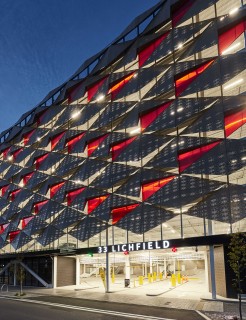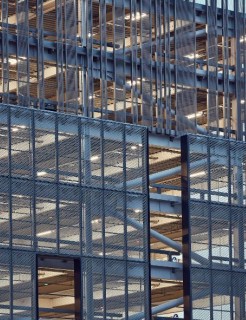
An Illuminating Article on Facade Lighting
There has been a discernible increase in demand for lighting incorporated into the facade. It makes sense too. The facade defines the character of a building so why not highlight aspects of the facade to show that character at night, or use color to display different sides of the character. This can even include the use of lighting to showcase a socially and culturally aware side of the building character, or that of the building occupants.
If a building facade speaks to the passer-by, lighting raises its voice and adds exclamation marks.
What is Facade Lighting and Why Is It Important?
Facade lighting is very much what you think it is - the lighting of a building facade or aspects of it. That lighting may be provided by floodlights, spotlights, downlights, strip lighting, or any other kind of artificial illumination.
Its importance depends on the architectural design. Some might require the most simple uniform illumination to showcase the facade at night, as is often the case with tourist attractions or landmarks, where the front face of the building has become iconic and not casting a light over it as the sun falls would rob visitors of experiencing its wonder. Not to mention that instagram selfie with the aforementioned building of significance.
For other buildings, facade lighting is part of the design from the very beginning (more on why this is an important consideration soon) and the architectural intent cannot be fully realized without strategically placed lighting.
Aesthetically, facade lighting can be used to tell a story and provide an emotional connection that doesn’t exist during daytime. It can provide a reason to visit or a reason to return. In that regard, facade lighting is particularly effective if the building's function generates revenue at night-time. Just think of all those times you’ve been drawn to the bright lights of a fast food outlet after dark, like a moth to a flame. Yes, those lights really are hard to resist.
Aside from fast food outlets, where the branding is generally brash and oversized, facade lighting can be subtly employed to reinforce a brand presence and aspects of the brand personality. Most brands have their own color palette and facade lighting which uses the same palette will reinforce the brand, helping create the mental availability that’s so important in marketing.
The other importance of facade lighting is purely functional - to help with security and safety. Removing shadows can remove potential threats, either from tripping over or banging into something, or threats posed by the more contemptible individuals every society seems to have.
Mostly though, facade lighting is important simply because light is important. In the words of Stevel Holl:
“Space is oblivion without light. A building speaks through the silence of perception orchestrated by light. Luminosity is as integral to its spatial experience as porosity is integral to urban experience.”
Techniques for Facade Lighting
Innovations in lighting have dramatically increased the lighting options available in recent years. That said, the following techniques still apply even though the technology used to deliver them can have an impact on the result.
Direct Lighting. This is where the facade is illuminated by lighting fixtures attached to the facade face itself, such as spotlights.
Wash Lighting. A wide beam of light is used to ‘wash’ the facade with light. Often used with colored lights, this technique is a favorite of tourist attractions and municipal buildings.
Wall Grazing. This method places the light fixture close to the facade surface, where it can ‘graze’ the surface as the light diminishes the further it gets from the source. Typically, this technique is used for ground level lights that fade away in an upwards direction, creating a somewhat mysterious aesthetic, loaded with suspense.
Accentuating. Particularly useful for complicated facades, this technique uses directed beams of light to illuminate and emphasize particular aspects of the design. Adding colored lighting increases the dramatic effect and opens up the storytelling potential of the facade.
Floodlights. A more traditional approach, the facade is subjected to uniform illumination that casts a consistent level of brightness across the surface.
Examples of Illuminated Facades
Visitors to the Allianz Arena in Munich (home to Bayern Munich FC) can see 26,000 m² of the facade light up for two hours from sunset on non-match days, with the lighting transitioning from red to white. Europe’s biggest stadium with all-round LED lighting will also light up red only for home and away matches, or white when the German national team plays.
But what about a more complicated facade? The facade of La Sagradia Familia has been some 144 years in the making (and counting). From April this year, the figures of the tetramorph on the four towers of the Evangelists have joined the tower of the Virgin Mary and the Nativity and Passion facades, showcasing the genius of Gaudi’s design every evening to eager passers-by and visitors.
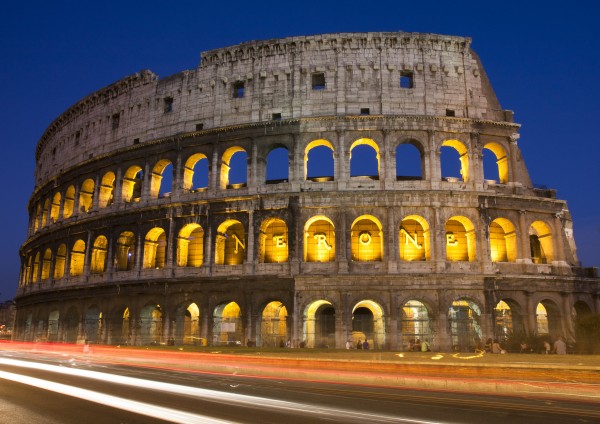
Hop across the Balearic Sea, then past the Tyrrhenian Sea, to the equally impressive Coliseum and you’ll see a combination of uplighting and grazing techniques used to accentuate the famous landmark's incredible architectural detail. The ‘Roman Facade Lighting’ illuminates the towering arches and ornate elements, creating a visceral experience for Rome’s 10 million plus annual visitors.
Elsewhere, facade lighting can be used to display support for a particular cause or cause. For example, Apraxia Awareness Day on 14th May saw facades turned blue across England and the United States (where Niagara Falls even got in on the act). Closer to home, Auckland’s Sky Tower is frequently lit in different colorsto show support for charities or national holidays/
Before we turn the lights out on this section, an honorary mention should go to Hong Kong. Not only does Hong Kong boast some impressive illuminated facades, but they have managed to light up 43 of them in unison as part of the nightly symphony of lights show. At 8pm every evening, music performed by the Hong Kong Philharmonic Orchestra is piped out of speakers, adding the rhythm for lasers, searchlights and LED screens to follow. It certainly leaves the efforts of other cities in its shadow.
Planning for Facade Lighting
Somewhat unsurprisingly, the best examples of facade lighting are well planned for in advance. This isn't just because careful thought and consideration to color options, and where to cast shadows, is important during the initial design process. It’s also because all those wires need a place to live and there has to be room for service.
Alexandra Park Stage 2 uses 3mm aluminum sheeting with a custom dapple pattern formed from random rectangular perforations. These perforations allow the backlighting to show through and ‘warm’ the building as night falls. It’s as if the passer by can see through to this warmth, making the apartment building attractive and welcoming. What can’t be seen to the naked eye but was hugely apparent to the engineering eye, are the meters upon meters of cabling required to support the color-changing LED backlighting system.
What should also be noted heer is the need for resource consent for lighting. This is why including facade experts like Insol from an early design stage is important. With our experience and expertise, we’re able to progress projects to not only meet critical milestone timings, but also to make sure the architectural intent can be fully realized, in bright lights, for all to see.
So what’s next for facade lighting? Well, considering the connectivity of the world and IFTTT protocols, then what about a facade with lighting that reacts to the external environment? It’s quite conceivable that facade lighting could be programed to respond to environmental criteria, with the level of lighting and tone of colorused, changing according to atmospheric conditions or other triggers. For example, the facade lighting could slowly increase as the sun ges down, but not just by the timing of the sunset but also the level of cloud cover in the sky above.
Maybe a Council building facade could change color to issue a weather warning or flash twice every time the All Blacks score during the big game. Or a facade could gently blink when the emergency services have been called to its location, helping guide first responders to the location.
Whatever the reason, the future of facade lighting is certainly bright. And it comes in approximately 16.7 million colors.

